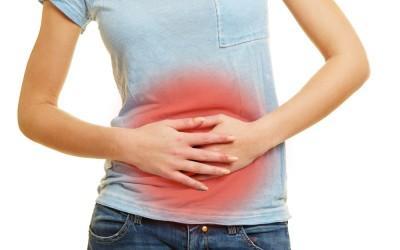Back pain is a common complaint that can be caused by various factors, including issues with the gallbladder. Understanding the causes of gallbladder-related back pain and how to manage it effectively is crucial for those experiencing discomfort in this area. In this comprehensive guide, we will delve into the reasons behind gallbladder pain, explore treatment options, and provide insights on managing postprandial gallbladder pain.
Gallbladder Pain: Causes and Treatments

Causes of Gallbladder Pain
Gallbladder pain, also known as biliary colic, typically occurs when gallstones block the bile ducts or when the gallbladder becomes inflamed. The pain is often felt in the upper right abdomen and can radiate to the back, between the shoulder blades. Other common symptoms include nausea, vomiting, and bloating.
In addition to gallstones and inflammation, other factors can contribute to gallbladder pain. These may include:
- Diet: Consuming a high-fat diet can increase the risk of developing gallstones, which can lead to gallbladder pain.
- Obesity: Being overweight or obese is a significant risk factor for gallbladder issues and associated pain.
- Rapid weight loss: Losing weight too quickly can also trigger gallstone formation and subsequent pain.
- Genetics: A family history of gallbladder problems can predispose individuals to experiencing gallbladder pain.
Treatment Options for Gallbladder Pain
The treatment for gallbladder pain depends on the underlying cause and severity of the condition. In cases where gallstones are the culprit, healthcare providers may recommend the following approaches:
- Pain management: Over-the-counter pain relievers such as acetaminophen or ibuprofen can help alleviate discomfort.
- Dietary changes: Adopting a low-fat diet and avoiding trigger foods can reduce the frequency and intensity of gallbladder pain.
- Medications: Certain medications may be prescribed to dissolve gallstones or reduce inflammation in the gallbladder.
- Surgery: In severe cases, surgical removal of the gallbladder (cholecystectomy) may be necessary to eliminate recurrent pain and complications.
It is essential to consult with a healthcare professional for an accurate diagnosis and personalized treatment plan tailored to individual needs.
Relieving Gallbladder Pain
Lifestyle Modifications for Pain Relief
Making certain lifestyle modifications can help alleviate gallbladder pain and prevent future episodes. Here are some strategies to consider:
- Maintain a healthy weight: Achieving and maintaining a healthy weight through a balanced diet and regular exercise can reduce the risk of gallbladder issues.
- Stay hydrated: Drinking an adequate amount of water daily can promote proper digestion and help prevent gallstone formation.
- Eat a balanced diet: Focus on consuming a variety of nutrient-dense foods, including fruits, vegetables, whole grains, and lean proteins, while limiting saturated fats and processed foods.
- Practice stress-reducing activities: Stress can exacerbate gallbladder pain, so incorporating relaxation techniques such as yoga, meditation, or deep breathing exercises can be beneficial.
Alternative Therapies for Pain Management
In addition to conventional treatments, some individuals find relief from gallbladder pain through alternative therapies. These may include:
- Acupuncture: This traditional Chinese therapy involves inserting thin needles into specific points on the body to alleviate pain and promote healing.
- Herbal remedies: Certain herbs such as milk thistle, dandelion, and turmeric are believed to support gallbladder health and reduce inflammation.
- Massage therapy: Gentle massage techniques applied to the abdomen and back can help relax tense muscles and improve circulation, potentially easing gallbladder pain.
Before trying any alternative therapies, it is essential to consult with a qualified healthcare provider to ensure safety and effectiveness.
Pain Management Strategies
When experiencing gallbladder pain, there are several strategies that can provide immediate relief:
- Apply heat: Placing a heating pad or warm compress on the affected area can help relax tense muscles and alleviate discomfort.
- Take a warm bath: Soaking in a warm bath can have a soothing effect on the body and may help ease gallbladder pain.
- Practice gentle stretching: Engaging in gentle stretching exercises, such as yoga or Pilates, can improve flexibility and reduce muscle tension in the back and abdomen.
By incorporating these pain management strategies into your routine, you can better cope with gallbladder-related back pain and improve your overall quality of life.
Postprandial Gallbladder Pain: Understanding and Management
Postprandial gallbladder pain refers to discomfort that occurs after eating, particularly meals high in fat. This type of pain is often indicative of gallbladder dysfunction and may require specific interventions for effective management.
Causes of Postprandial Gallbladder Pain
After consuming a meal, the gallbladder contracts to release bile into the digestive tract to aid in the breakdown of fats. In individuals with gallbladder issues, this process can trigger pain and discomfort due to various factors, including:
- Gallstones: The presence of gallstones can obstruct the flow of bile, leading to increased pressure in the gallbladder and subsequent pain.
- Dysfunctional gallbladder: A gallbladder that does not function properly may not contract efficiently after meals, causing bile to accumulate and trigger pain.
- Biliary dyskinesia: This condition involves abnormal gallbladder motility, resulting in poor emptying of bile and postprandial pain.
Understanding the underlying cause of postprandial gallbladder pain is essential for implementing targeted treatment strategies.
Management of Postprandial Gallbladder Pain
Managing postprandial gallbladder pain involves addressing dietary triggers, promoting healthy digestion, and seeking medical guidance when necessary. Here are some tips for effectively managing this type of pain:
- Follow a low-fat diet: Limiting the intake of high-fat foods can reduce the workload on the gallbladder and minimize postprandial pain.
- Eat smaller, more frequent meals: Consuming smaller meals throughout the day can help prevent overloading the gallbladder and alleviate discomfort.
- Stay upright after eating: Avoid lying down immediately after meals to allow gravity to aid in digestion and prevent reflux of stomach contents into the esophagus.
By adopting these management strategies and working closely with healthcare providers, individuals can better control postprandial gallbladder pain and improve their overall digestive health.
Conclusion
In conclusion, understanding the causes of gallbladder pain and implementing effective management strategies are crucial for alleviating discomfort and improving quality of life. Whether dealing with acute biliary colic, chronic back pain from gallbladder issues, or postprandial discomfort, seeking timely medical attention and making appropriate lifestyle modifications are key steps towards long-term relief. By incorporating a combination of conventional treatments, alternative therapies, and pain management strategies, individuals can take control of their gallbladder health and experience greater well-being. Remember to consult with healthcare professionals for personalized advice and guidance tailored to your unique needs.
